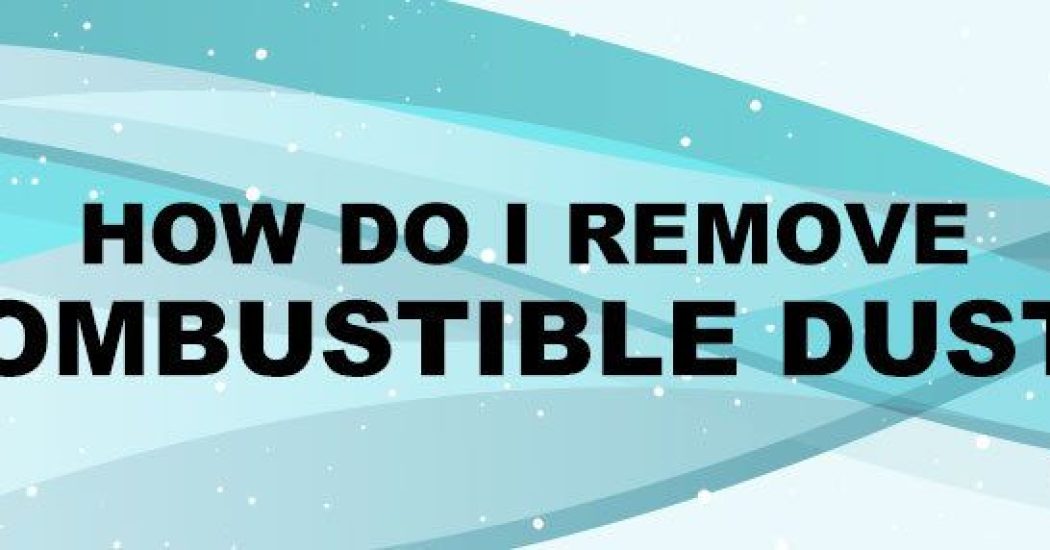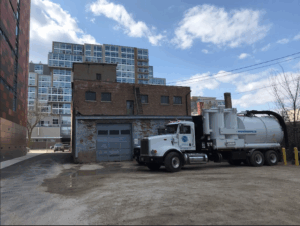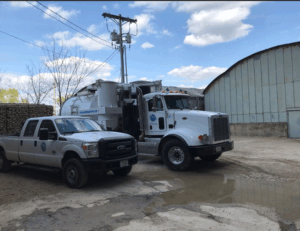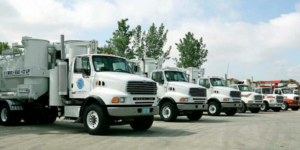The National Fire Protection Association (NFPA) offers guidance on basic housekeeping measures at a facility with dust in the atmosphere:
- Minimize escape of dust from equipment and ventilation systems
- Use dust collection systems and filters
- Inspect for dust residues at regular intervals
- Clean at regular intervals
- Use methods that don’t generate dust clouds if ignition sources are present
The physical process of removing dust from an industrial facility is relatively straightforward. However, specialized equipment and operator training is often required. Perhaps the most important thing is good planning.
“We do whatever we can to work around a client’s production schedule,” says Rob Towey, operations manager for Great Lakes Power Vac, a Wisconsin-based provider of industrial cleaning and environmental services since 2004. “While we are capable of working during production with minimal interruption to the facility’s processes, we always like to plan things out with our client.”
Speaking of planning, Towey says facilities should take care of any issues with their dust collection equipment around the same time the cleaning crew comes in. Otherwise, the time and expense of having dust removed from the facility could be undone by the malfunctioning or underperforming of the dust collection equipment.
MAINTAINING DUST COLLECTION EQUIPMENT
The experts at J Carpenter Environmental offer some advice on how to properly maintain dust collection equipment. J Carpenter Environmental is a Wisconsin-based distributor of products and equipment for environmental protection and compliance including dust and air pollution control.
Leak detection. The first thing to do is conduct a fluorescent leak detection test. Special fluorescent powders and UV lights will help pinpoint leaks at various points in the dust collection system, i.e. seams, welds, bags and cartridges. This type of test is far more efficient and accurate than simply eyeballing it. A professional can help execute the test if you want some help.
Confirm proper compressed air function. If your facility has a pulse jet dust collector, compressed air is used to clean the filters. Be sure to inspect the valves and hoses in the system because they can become damaged and begin leaking. When the cleaning system pulses, visually confirm that all valves work at the same time. Also ensure that all valves open and close all the way. Finally, make sure hoses aren’t coming loose or showing excessive wear which could result in a leak.
Seals and gaskets. Dust collection systems often have door seals. The gasket around the edges of the door can wear out. If the door no longer seals properly, you’ll run into problems. Open the doors and inspect the gaskets, replacing as needed. Additionally, most dust collection systems have an airlock. It is best practice to either repair, rebuild or replace the airlock annually to help keep the system running at peak efficiency.
Fan. The fan is a crucial part of the dust collection system, so giving it some attention is also highly recommended. We are talking about bearing lubrication, belt inspection, and ensuring that the fan impeller is properly balanced.
WHEN IT’S TIME TO CLEAN, VACUUMING IS PREFERRED
When your dust collection system is in good working order, it’s time to press forward with the facility cleaning phase.
OSHA states that vacuuming is the preferred method of removing dust from a facility. Vacuuming stirs up little to no dust which prevents areas that were just cleaned from having more dust thrown back on them. Safety is also enhanced. Remember, dust dispersion into the air is one of the five ingredients of the Dust Explosion Pentagon. Vacuuming results in little to no dust dispersion.
The vacuum cleaners themselves should meet certain requirements in order to ensure the safest, most effective dust removal job possible. For instance:
- Made of certain materials that comply with other NFPA standards
- Hoses should be conductive or static-dissipative
- All other conductive components, including wands and attachments, should be bonded and grounded
- Dust-laden air should not be allowed to pass through the fan or blower
- Electrical motors should generally not be in the dust-laden air stream
- When liquids or wet material are being vacuumed, paper filter elements should not be used
- Personnel performing the work may need to be grounded
If vacuuming isn’t possible, sweeping or washing down the dust are considered acceptable methods, although neither is as efficient as vacuuming.
One cleaning method a facility should always try to avoid is blowing. Blowing stirs up a lot of dust which impacts both efficiency and safety. The only circumstances in which blowing should be considered are when areas needing to be cleaned are inaccessible by the preferred cleaning methods, or when the preferred methods create a safety risk.
KEYS TO AN EFFECTIVE CLEANING PROCESS
In addition to using the right type of cleaning equipment, it’s also important for cleaning personnel to follow the right process.
“We like to work from the top down,” Towey says. “We start vacuuming at the highest levels of the facility, typically the rafters, and then finish up at ground level. If you work the opposite way, you’re just going to knock dust down onto the areas you just cleaned.”
The dimensions and overall layout of a facility can vary widely from one to the next. This is why a pre-site visit is an essential step in the dust removal process.
“We’ll often run into challenges with accessing certain areas of a facility,” Towey relates. For instance, some facilities provide easy catwalk access to the rafters while others do not. Also, cranes and man cages can sometimes be used, whereas scissors or boom lifts might be needed in other instances.
“Every facility is going to be different,” Towey reminds. “That’s why we like to go in and take a look around. Then we can come up with a plan as to how we’re going to tackle the cleaning.”
Once the plan is laid out and the cleaning event actually takes place, the dust needs to be disposed of. How a facility goes about this will also vary.
“Many times, the facilities themselves take care of disposable,” Towey says. For instance, they may already have a profile set up at a landfill. Other times, the service provider can set up a profile at a landfill and take care of the disposal.
For this reason, the method of disposal is for the facility and service provider to work out between themselves. Regardless of which method is decided upon, the dust will need to be disposed of legally, safely and efficiently. Most importantly, it will no longer be creating a significant safety risk in the facility.







